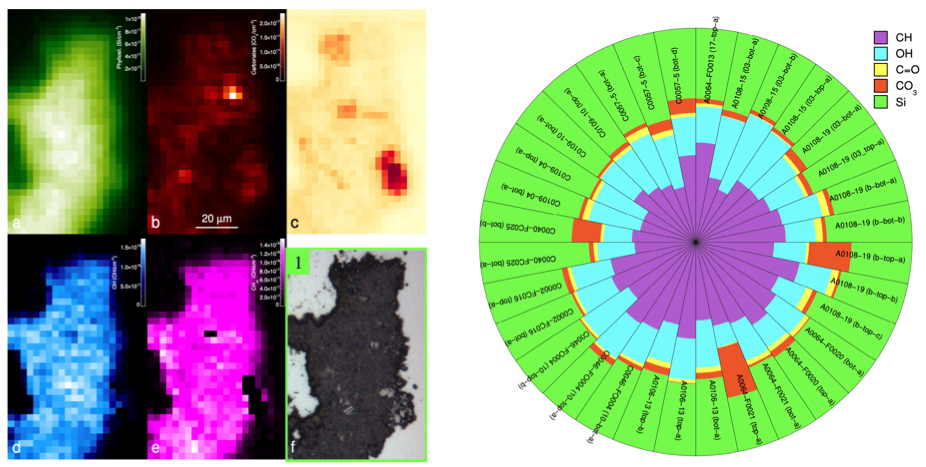Several spectroscopic methods are used to study the possible links between young phases observed in protoplanetary disks and primitive matter of our solar system: observation of distant objects (combined with appropriate modeling of radiative transfer); collection and laboratory analysis of potentially very primitive extraterrestrial matter resulting from the solar system formation process.
Collected in our solar system, the characterization of interplanetary dust is a topic addressed using several innovative spectroscopic approaches. Firstly, we have carried out sequences of multi-technique experimental measurements (infrared microspectroscopy, Raman, EDX, nano-SIMS) that have enabled us to characterize real Antarctic micrometeorites (Concordia collection IJCLab/MNHN collaboration) or samples collected on asteroids (such as Ryugu, Hayabusa2 space mission). The chemical composition of samples can also be determined by synchrotron spectroscopy in the mid- to far-infrared. Infrared (IR) hyper-spectral maps of whole grains of asteroids or micrometeorites can be measured at the highest spatial resolution achievable with synchrotron in mid-infrared (MIR). These analyses are complemented by additional global spectra in the far infrared (FIR).

Left: Example of hyper-spectral maps revealing the small-scale variability of functional groups and the intimate association of phyllosilicates with aliphatic components of the organic matter in a grain collected from the Ryugu asteroid surface. Right: modal composition of several grains from Ryugu’s surface measured at the synchrotron.
For the characterization of interplanetary dust, the use of new developments at very small spatial scales are being studied through collaboration within the Origins PEPR. Atomic force microscopy in infrared (AFM-IR), based on the detection of the sample’s photothermal expansion signal, combines the high spatial resolution of atomic force microscopy with the chemical identification capability of infrared spectroscopy to perform submicrometer physico-chemical analyses, overcoming the diffraction limit and achieving a gain in spatial resolution of several orders of magnitude.
In this way, we are investigating possible links between the dust observed via space observatories and telescopes in young protoplanetary disks and the primitive matter observed or collected in our solar system. We are analyzing in the laboratory these potentially very primitive extraterrestrial materials resulting from the solar system formation process. In parallel, distant astrophysical objects are studied via appropriate radiative transfer modelling.
Contacts:
Emmanuel Dartois
Marie Godard
Thomas Pino